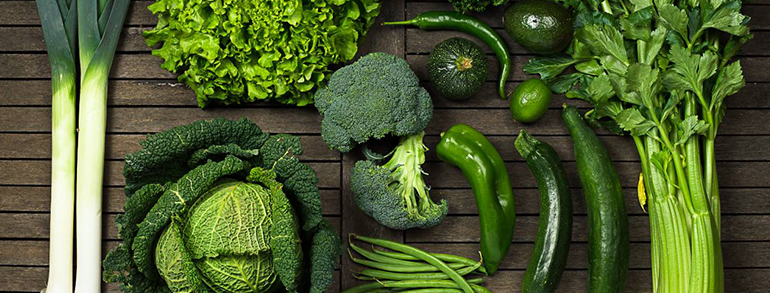Aahar, Pathya, Apathya
Ayurveda has holistic and scientific approach in health management. It emphasizes much more on diet and regimen along with medicines. The diet and regimen which is beneficial to the body and gives the happiness to the mind is known as Pathya and opposite to that is known as Apathya. Most of the health problems develop due to the faulty eating habits and regimen. Ayurveda deals with the pathya vyavastha (planning of diet- dietetics) in a very scientific way. The planning of diet mentioned in our classical literature is very rational and based on certain principles. Lot of importance is given to the diet with regard to its processing, quality, quantity and so on. Due consideration is given to the atmosphere, psychological condition, status of health, digestion etc. of the person while dealing with this issue. The diet should also be planned according to the age, season, habitat and the preference of the person.
आयुर्वेद एक बहुत ही विस्तृत चिकित्सा पद्धति है | यह पुर्णतः वैज्ञानिक दृष्टिकोण पर तैयार की गयी है | अगर हम आयुर्वेद में वर्णित सिद्धांतो के अनुरूप जीवन यापन करें तो हमें कदापि दवाओं पर आश्रित नहीं रहना पड़े | इसी आधार पर पथ्य अपथ्य (Pathya Apathya) का वर्णन आयुर्वेद ग्रंथो में किया गया है |
पथ्ये सति गदार्तस्य किमौषधनिषेवणे : || पथ्ये असति गदार्तस्य किमौषधनिषेवणे : ||
अर्थात अगर आप अपने जीवन में पथ्य आहार का सेवन करते हैं तो आपको औषध की जरुरत ही नहीं पड़ेगी एवं अगर आप अपथ्य आहार का सेवन कर रहें है तो चाहे कितनी ही कारगर दवा क्यों न हो आपको उससे कुछ खास लाभ नहीं होगा | अतः हमेशा पथ्य अपथ्य का खयाल रख कर ही आहार लें |
आयुर्वेदानुसार पथ्य आहार कोनसे हैं ?
आसानी से पचने वाले आहार पथ्य आहार में आते हैं | जैसे पुराने चावल का भात, पुराने जौ का दलिया, ज्वार का आटा, मूंग की दाल, अरहर की पतली दाल एवं दूध की पतली खीर इत्यादि | आइये अब जानते हैं पथ्य आहार के बारे में :-
मसाले :- धनियाँ, जीरा, सौंफ, तेजपता आदि मसाले सौम्य प्रकृति के होते हैं | प्रमेह, कफ, खांसी, बवासीर एवं नेत्ररोगो में हितकारी होते हैं |
फल वाले शाक (सब्जी) :- ककोड़ा, लौकी, बैंगन, तुरई, भिन्डी आदि पथ्य गुणों वाली सब्जियां हैं |
पते वाले शाक (सब्जी) :- पुनर्नवा, पालक, चौलाई, बथुवा, गोभी के पते, गाजर के पते एवं मेथी |
कंद वाले शाक (सब्जी) :- मूली, गाजर, जमीकंद, शकरकंद एवं आलू इन्हें भून कर या उबाल कर भाजी बनाने पर यह पथ्य आहार में आते हैं |
पथ्य फल :- मीठा अनार, अंगूर, मीठे आम, सेब, सीताफल, मौसमी, अन्नानास एवं कागजी निम्बू |
जानें अपथ्य खाद्य पदार्थो के बारे में |
इन्हें मुख्य रूप से तीन भागो में विभाजित किया गया है | आइये जानते हैं :-
पित्तवर्धक खाद्य पदार्थ :
निम्न वर्णित पदार्थ पित्त बढाने वाले हैं | अगर पित्त बढ़ गया हो तो इन पदार्थो का सेवन न करें | ये सर दर्द, चक्कर आना, लकवा एवं धात का पतला होना आदि रोगों में सेवन न करें |
दही छाछ, तेल एवं तेल में तले हुए पदार्थ |
गुड़, नमक, मिर्च एवं हींग |
मूंगफली, सहजन की फली, करेला, शराब |
बासी खाना, चाय, तम्बाखू, गांजा |
कफवर्धक पदार्थ :
कफ दूषित हो जाने या अधिक कफ बनने की समस्या से बहुत से रोग उत्पन्न हो जाते हैं | अस्थमा, खांसी, न्यूमोनिया जैसे रोग हो जाने निम्न पदार्थो का सेवन न करें | इन रोगों में यह अपथ्य आहार में आते हैं |
केला, नया अन्न, दही छाछ, ठन्डे पदार्थ |
ज्यादा ठंडा पानी, नयी ईमली |
खट्टे बेर, कच्चे अमरुद, आंवला |
चिरोंजी का तेल, कच्चा घी, कच्चे नारियल का पानी |
वात वर्धक पदार्थ :
कुछ पदार्थ वायुकारक होते हैं | कमजोर पाचन शक्ति होने, पेट के रोग एवं अजीर्ण आदि की समस्या में इनका परहेज करना चाहिय |
चना, मटर, मसूर का साग, दाल |
बेसन के लड्डू, आलू, कटहल, |
बासी एवं खट्टा भोजन |
खट्टे फल एवं फ़ास्ट फ़ूड |
Traditional diets are similar to the Ayurvedic diet since they are ethnic to the place of origin, involve traditional, fresh preparations, smaller portion sizes, discourage processed foods and meals are a social event. Lifestyles are healthier with more walking or exercise. They commonly favor fresh, local, seasonal foods, plenty of fruit and vegetables, wholegrain cereals, beans, fish, and moderate amounts of lean meat, with healthy fats like olive oil. Major drinks are water, tea, wine or fermented drinks. Ayurveda would also view them as Satmiyam (traditional foods people can digest better!) While other eating plans focus on the nutritional qualities of particular foods to create an all-around healthy meal, an Ayurvedic diet emphasizes the tastes on your plate. According to Ayurveda principles, all six tastes—sweet, sour, salty, pungent, bitter, and astringent (acidic) need to be present for a balanced meal. These guiding principles also say that each taste has a specific effect on the digestive system and your overall dosha. That means the amount of each taste you incorporate on your plate will depend on your dosha—not to mention a necessity in keeping your energy from being aggravated or diminished and promoting proper digestion.



